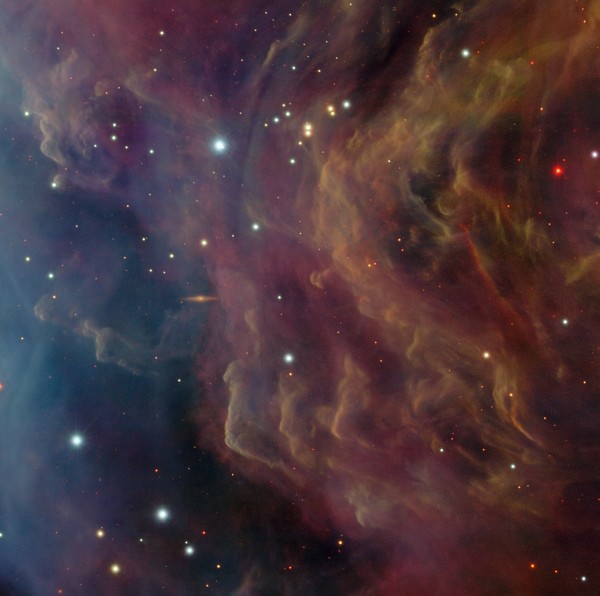"So numerous are the objects which meet our view in the heavens, that we cannot imagine a point of space where some light would not strike the eye;—innumerable stars, thousands of double and multiple systems, clusters in one blaze with their tens of thousands of stars, and the nebulae amazing us by the strangeness of their forms and the incomprehensibility of their nature, till at last, from the limit of our senses, even these thin and airy phantoms vanish in the distance." -Mary Fairfax Greig Somerville
The distant nebulae might appear to illuminate the night sky, but this neutral gas is mostly only good for reflecting or absorbing starlight, which obscures the view of all the stars and galaxies lying in the background. But this light-blocking effect is only temporary, as over time, this neutral gas will give way to transparency.
All it takes is the energy of the hot, blue stars forming inside, whose ultraviolet radiation will eventually ionize all of the material within it. The last gasps of the neutral gas will appear as Evaporating Gas Globules (EGGs), and when they're all completely ionized, the starlight from everything beyond will be free to stream towards our eyes unimpeded.
 Principal Investigator(s): John Bally and Adam Ginsberg, University of Colorado and the GeMS/GSAOI commissioning team; Data processing/reduction (using the Gemini IRAF package v1.12beta): Rodrigo Carrasco, Gemini Observatory; Color image composite: Travis Rector, University of Alaska Anchorage. Image credit: Gemini Observatory / AURA.
Principal Investigator(s): John Bally and Adam Ginsberg, University of Colorado and the GeMS/GSAOI commissioning team; Data processing/reduction (using the Gemini IRAF package v1.12beta): Rodrigo Carrasco, Gemini Observatory; Color image composite: Travis Rector, University of Alaska Anchorage. Image credit: Gemini Observatory / AURA.
Go get the full story in pictures, video and no more than 200 words on today's Mostly Mute Monday!


"When ionization is complete, not only are even the faintest stars revealed, but light from all the stars and galaxies beyond streams through."
I remember reading that the early universe was opaque precisely because the gas was ionized ie plasma. Yet here we have the opposite! Doesn't ionization mean that the photons were scattered by Compton scattering. We seem to have two different stories about ionized gas and visibility.
What am I missing?